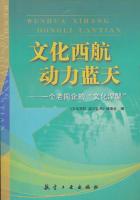The deeper and more comprehensive study of the subject which has of late years prevailed in America,added to influencesfrom abroad,has given rise,there also,to a division of economists into two schoolsan old and a new similar to thosewhich we have found confronting each other elsewhere.A meeting was held at Saratoga in September 1885,at which asociety was founded,called the American Economic Association.The object of this movement was to oppose the idea thatthe field of economic research was closed,and to promote a larger and more fruitful study of economic questions.The samespirit led to the establishment of the Quarterly Journal of Economics ,published at Boston for Harvard University.The firstarticle in this Journal was by C.F.Dunbar,whose review of a Century of American Political Economy we have alreadynoticed;and in this article he set out,in the interest of conciliation,the tendencies of the two schools.
This division of opinion was manifested in a striking way by a discussion on the method and fundamental principles ofEconomics,which was conducted in the pages of the periodical entitled Science ,and has since been reproduced in a separateform (Science Economic Discussion ,New York,1886).In this controversy the views of the new school were expoundedand advocated with great ability.The true nature of economic method,the relativity both of economic institutions and ofeconomic thought,arising from their dependence on varying social conditions,the close connection of economic doctrinewith contemporary jurisprudence,the necessity of keeping economics in harmony with social ethics,and the importance of astudy of consumption (denied by J.S.Mill and others)were all exhibited with remarkable clearness and force.(19)There isevery reason to believe with Leslie that America will take an active part both in bringing to light the economic problems ofthe future and in working out their solution.
NOTES:
1.It would be a grave error to suppose that the subjection of social phenomena to natural laws affords any encouragementto a spirit of fatalistic quietism.On the contrary,it is the existence of such laws that is the necessary basis of all systematicaction for the improvement either of our condition or of our nature,as may be seen by considering the parallel case ofhygienic and thereapeutic agencies.And,since the different orders of phenomena are more modifiable in proportion to theirgreater complexity,the social field admits of more extensive and efficacious human intervention than the inorganic or vitaldomain.In relation to the dynamical side of Sociology,whilst the direction and essential character of the evolution arepredetermined,its rate and secondary features are capable of modification.
2.He had already in 1822stated his fundamental principles in an epuscule which is reproduced in the Appendix to his Politique Positive .
3.Under the influence of these views of Comte,J.S.Mill attempted in Book IV.of his Political Economy a treatment ofEconomic Dynamics;but that appears to us one of the least satisfactory portions of his work.
4.This phraseology was probably borrowed from the controversy on the method of jurisprudence between Thibaut on theone hand and Savigny and the school of Hugo on the other.
5.It will in each case be necessary to examine whether the action can best be taken by the central,or by the local,government.
6.This should be remembered by readers of M.Leroy-Beaulieu's work on Collectivism (1884),in which be treats Sch?ffle asthe principal theoretic representative of that form of socialism.
7.By the present writer;being an Address to the Section of Economic Science and Statistics of the British Association at itsmeeting in Dublin in 1878.
8.Guide to the Study of Political Economy ,1880.See also the Bibliographical matter in his Primi Elementi di E.P .,vol.i,8th ed.,1888.
9.See his Saggi di Economia Politica .188110.The remarkable book Money and Morals ,by John Lalor,1852.was written partly under the influence of Carlyle.Thereis a good monograph entitled John Ruskin's,Economist ,by P.Geddes,1884.
11.See her Autobiogaphy .2d ed.,vol.ii,p.244.
12.A vigorous attack on the received system was made by David Syme in his Outlines of an Industrial Science ,1876.
13.Jones,whose writings were apparently unknown to Bagehot,had.as we have seen,in some degree anticipated him in hisexposition.
14.Mr Rogers has since continued this work,and has also published The First Nine Years of the Bank of England ,1887.
15.That service was due to F.D.Lange (Refutation of the Wage-Fund Theory of Modern Political Economy ,1866).
Leslie's treatment of the subject was contained in an article of Fraser's Magazine for July 1868.reprinted as an appendix tohis Land-Systems and Industrial Economy of Ireland.England,and Continental Countries ,1870.
16.Theory of Political Economy .2d ed.,p.103.
17.Fortnightly Review for November 1876,p.617.
18.See his Lectures on The Industrial Revolution in England ,with Memoir by the Master of Balliol,1884;2d ed.,1887.
19.The contributors on the side of the new school were Dr.Edwin R.A.Seligman,Professor E.J.James,ProfessorRichard T.Ely,Henry C.Adams,Richmond Mayo Smith,and Simon N.Patten.The representatives of the old school wereProfessor Simon Newcomb,F.W.Taussig,and Arthur T.Hadley.













